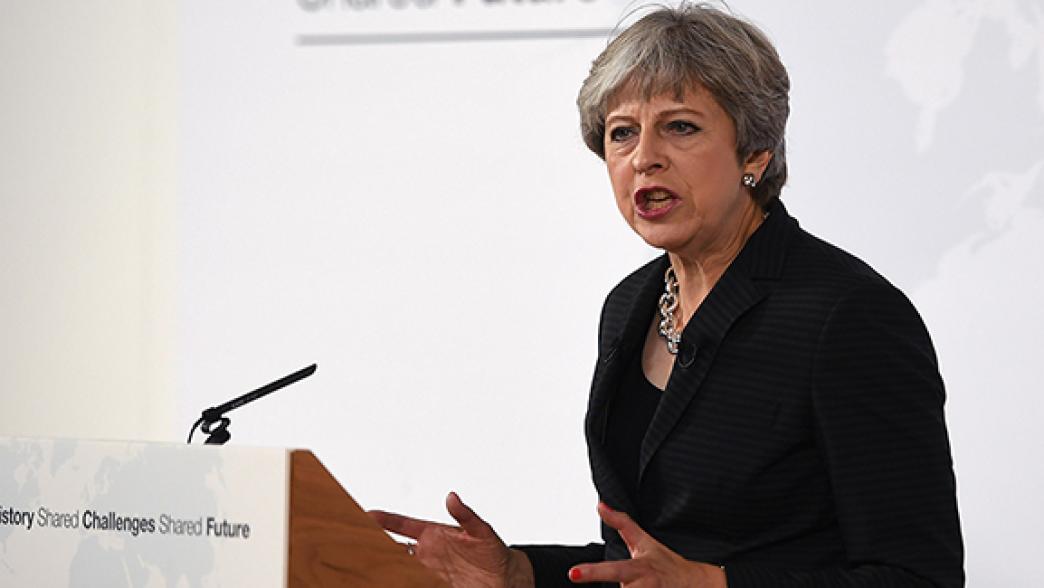Theresa May's Brexit speech: Florence
In a speech in Florence on 22 September 2017, Prime Minister Theresa May set out her vision for the UK's future in Europe. Here we explore what the pr

In a speech in Florence on 22 September, Prime Minister Theresa May set out her vision for the UK's future in Europe. Here we explore what the prime minister's speech means for progress in the Brexit negotiations.
Issue |
What the prime minister said |
Have we made progress? |
|---|---|---|
| Withdrawal Agreement | ||
| Northern Ireland | Both the UK and EU will not accept any physical infrastructure at the border and have committed to protecting the Belfast Agreement and the Common Travel Area. | No. This repeats the high-level aims in the position papers. It does not go as far as offering potential solutions. |
| Citizens' rights |
The prime minister stated that a key aim of the negotiations is to ensure EU citizens living in the UK could carry on living their lives as before. She said that the UK would incorporate the Withdrawal Agreement into UK law and make sure courts can refer directly to it. She also said that the UK courts could ‘take into account’ the judgements of the ECJ. |
A little. The reference to future European Court of Justice (ECJ) judgements removes one of the outstanding questions in negotiations on citizens’ rights. But it does not meet the EU’s request for the ECJ to be the final determinant on issues |
| Financial settlement | The UK will continue to contribute for the remainder of the budget period (until 2020). This means that no member state would need to pay more or receive less as a result of the UK leaving. |
Yes, but questions remain. This helps with the issue of outstanding budget commitments and the immediate hole created by the UK's departure. But does not offer anything on the longer-term liabilities (pensions, etc.). |
| Future partnership | ||
| Economic partnership | I don’t believe either of these options (EEA or CETA) would be best for the UK or best for the European Union. |
A bit. This is similar to earlier language on a bespoke arrangement – but making clear that the PM is rejecting the binary choice posed by Michel Barnier. |
| Managing divergence | The question for us now in building a new economic partnership is not how we bring our rules and regulations closer together, but what we do when one of us wants to make changes. |
A bit. Theresa May reiterates the point made by her ministers that UK starts form convergence – but picks up Barnier point that the issue is about how to manage subsequent divergence. |
| Regulatory standards | We share a commitment to high regulatory standards. People in Britain do not want shoddy goods, shoddy services, a poor environment or exploitative working practices and I can never imagine them thinking those things to be acceptable. The government is committed not only to protecting high standards, but strengthening them. |
Yes. This is new and very different from the January rhetoric about the UK as a deregulated competitor or Singapore on the Thames. It is designed to address the EU concerns that the UK would undercut standards when outside the single market. |
| Dispute resolution | To make this partnership work, because disagreements inevitably arise, we will need a strong and appropriate dispute resolution mechanism… This could not mean the European Court of Justice – or indeed UK courts – being the arbiter of disputes about the implementation of the agreement between the UK and the EU, however. |
Not really. A dispute resolution mechanism featured in both the February white paper and in a more recent future partnership discussion of options. This does not take the discussion much further given the existing ECJ red line. |
| Defence, security and criminal justice |
The PM proposed a treaty agreement between the UK and the EU. It would be a ‘bold new strategic agreement that provides a comprehensive framework for future security, law enforcement and criminal justice co-operation’. In addition, the UK committed to continuing aid and assistance to EU member states that are the victims of armed aggression, terrorism and natural or manmade disasters. |
Yes. This is the first mention of a treaty agreement. This also decisively moves away from what was interpreted as a threat to withdraw co-operation in the Article 50 letter |
| Transition | ||
| Transition |
The PM has proposed an implementation period where the relationship continues on the current terms (the EU single market and customs union) but the UK is no longer a member of the political institutions. The duration of the transition would be ‘strictly-time limited’, although the exact length would be determined by how long it takes to prepare and implement the new processes and systems required. The PM suggested that, at the moment, this points to a two-year transition. She also suggested that, if possible, elements of the new relationship could be introduced sooner. |
Yes. The PM has accepted the EU’s terms for transition, with a continuation of all rights and obligations of EU membership. She also made clear that the length of any transition would be driven by the time required to prepare and implement the new relationship, rather than setting out precise timings at this point. Her double lock is designed to assure both the EU and her own side that we will not be in permanent transition. |
Read Bronwen Maddox's comment – Theresa May edging forward on Brexit
- Topic
- Brexit